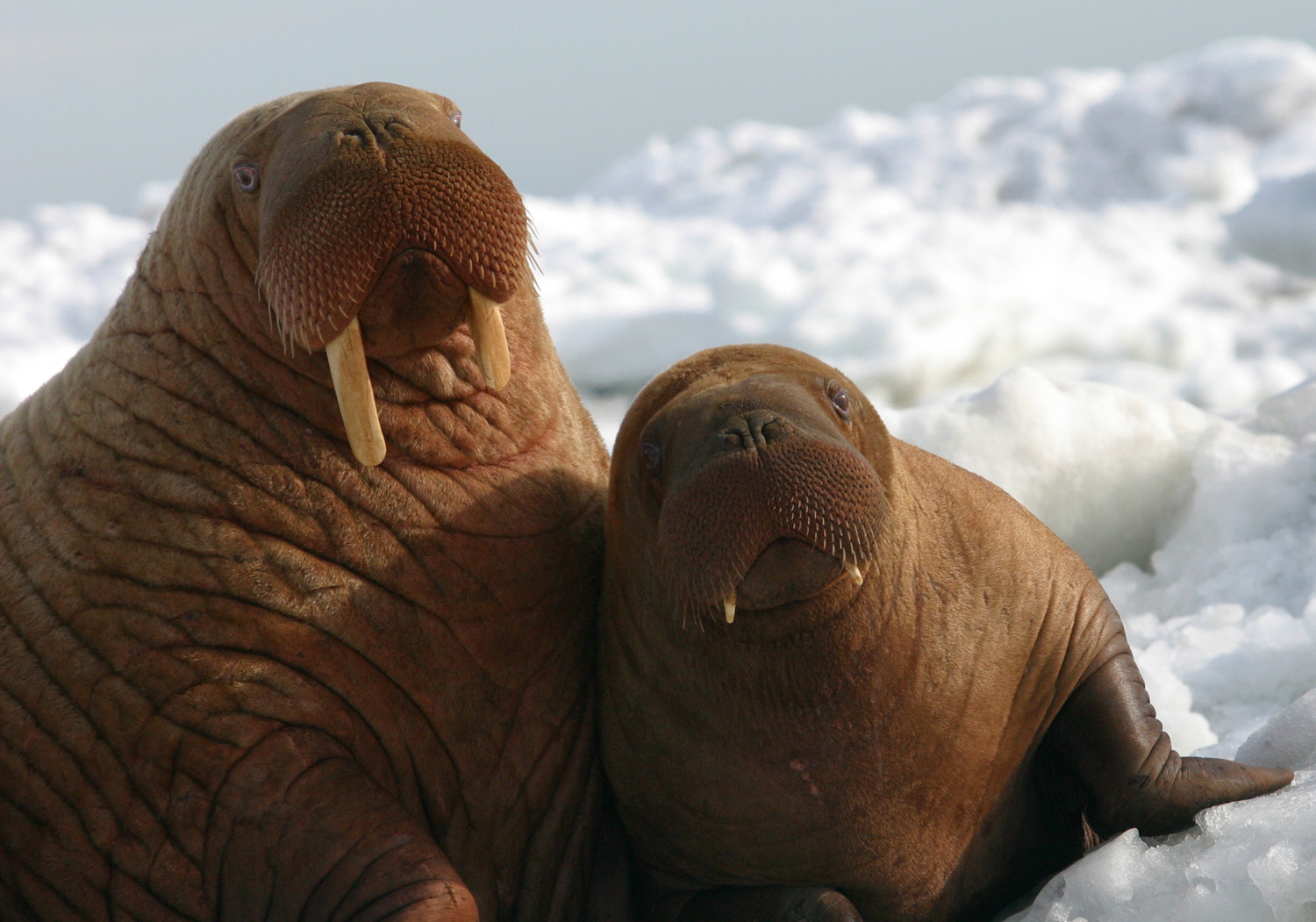In the Bering Straits region, 39 dead walrus washed ashore and were documented in various communities between mid-August and end of September. What caused these walruses to die is still unknown. KNOM’s Davis Hovey reports on what little is known about this occurrence and what else is a mystery.
Months ago, community members from Diomede and Shishmaref were asked to take samples from four walrus’ intestines. Gay Sheffield, a marine biologist with Alaska Sea Grant based in Nome, helped coordinate all the involved agencies to find out more about this marine mammal stranding event.
“Only one of the walruses was harvested and was fresh; the others, they were decomposing, and the samples we needed to get were intestinal contents and or stomach contents — that’s where you can actually pick up these biotoxins. So, it was a fantastic effort on the part of these communities to get the samples that they did. Why only four? At Shishmaref, they were at extremely remote locations up and down the beach, and also at Diomede, there weren’t many samples to be had.”
According to Sheffield, three of the walruses had low to moderate levels of saxitoxin, while the fourth one had high levels. Saxitoxin is a biotoxin produced by algae and is potentially a poisonous substance.
“The harvested animal from Diomede: (its) intestinal content was over 800 nanograms (of saxitoxin) per gram. Not that anyone would be eating the intestinal contents of a walrus; however, presumably that came from the stomach…”
Based on a U.S. Food and Drug Administration seafood safety regulation, consuming shellfish with more than 800 nanograms of saxitoxin per gram can harm humans and potentially cause paralytic shellfish poisoning, or PSP.
Louisa Castrodale, an epidemiologist with the Alaska Department of Health Social Services (DHSS), explains that when people eat shellfish that isn’t commercially sold, there is a risk of PSP.
“I mean, there’s always a potential, just because we can see saxitoxin in shellfish throughout the year. There’s always a concern for paralytic shellfish poisoning (PSP) and the impact of those toxins with consumption of recreationally harvested shellfish, so that hasn’t changed based on this.”
However, as Castrodale points out, even though this walrus tested positive for saxitoxin levels above the federal regulatory limit, it doesn’t necessarily mean there’s a human health issue:
“Saxitoxin doesn’t tend to go to those types of tissues, blubber, meat and muscle. So then, if you do find it in those intestines, what do we know about walrus and what do we know about those tissues, that we would think ‘does the case still hold that you wouldn’t find it in those tissues, or is there something different?’ We don’t know that, but we just have the published literature that says: ‘that doesn’t happen.’”
Sheffield says finding saxitoxins in walrus is not new for subsistence hunters in Western Alaska:
“We had tested for it for the very first time in 2012 and 2013, and we found it. And it’s not that it was novel to walruses or new to our region; it’s that it was new to science, in that it was the first time it had been looked for and we found it. So it’s not like, ‘Oh my gosh, we have saxitoxin!’ It’s more like, ‘Oh, okay, saxitoxin is here.’”
What is new for Sheffield and other marine mammal experts is finding algae blooms in Alaskan waters and an increased presence of algal biotoxins in walrus and other animals. Earlier this summer, between June and September, the U.S. Fish and Wildlife Service [USFWS] collected reports of nearly 1600 beached seabird carcasses from the Bering and Chukchi Sea regions. Algae could have played a role in the deaths of those seabirds, but that is still unclear.
Jonathon Snyder is a wildlife biologist for USFWS’s Marine Mammal Management Office. According to Snyder, USFWS has no idea how algal toxins might affect walrus or seabirds. Snyder says his office will continue its monitoring of subsistence animals, like walrus, on St. Lawrence Island until more is known about algal toxins in marine mammals.
For now, the one harvested walrus from Diomede is still being tested at a lab in Seattle, as it had levels of saxitoxin that maxed out the machine used to test it. So exactly how much saxitoxin was in the walrus is not yet known, but Sheffield believes when that number is known, it will offer some more insight into this marine mammal mystery.
(Any Local or Regional knowledge about clams would be appreciated by Gay Sheffield and Brandon Ahmasuk. For additional information, please click here.)
Image at top: Walrus and calf. Photo courtesy of NOAA.





